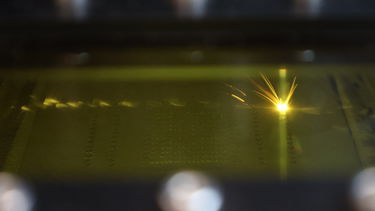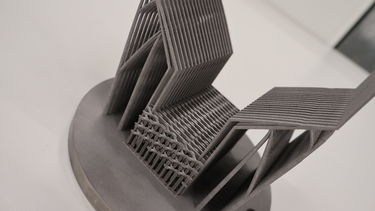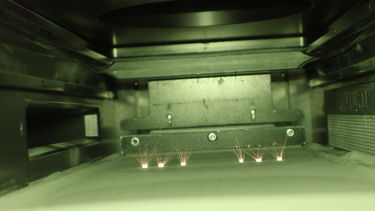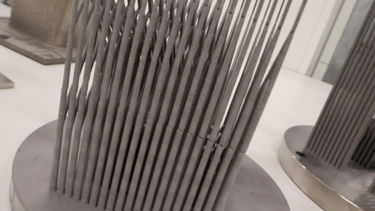Integral to our role here at Royce is outreach. This week we welcomed Lila on a work experience placement to the RDC. She's been investigating a couple of facilities and this is what she's observed in Additive Manufacturing with Dr. George Maddison.
Different grades of powder that can be used in Laser Powder-Bed Fusion (LPBF) manufacturing to make complex structures.
Before: metal powder
After: finished prototype, free of defects
One of the benefits of LPBF is being able to make very quick changes as part of a rapid prototyping process. Manufacturing novel designs can be difficult and the behaviour of different alloys can be unpredictable, so being able to make swift alterations to the CAD files means you can improve the prints with ease.
LPBF is the process by which a thin layer of powder is laid on the print bed, and a laser is fired to fuse the powder particles, one layer at a time, before the excess is swept away. This is repeated multiple times depending on the height of the finished design. In this example over 4,000 layers were completed.
LPBF is great for developing prototypes, and perfecting the CAD requirements. In this example an error was encountered leading to a break in the printing and a misalignment causing a gap in the print. (See Image A)
Also, in the original print run there was significant distortion due to how the powder behaved under the laser, and the dimensions of the desired structure. (See Image B)
Adjustments were made to the print file, to provide extra supports to stabilise the affected areas. Subsequent print runs were then much stronger, and resistant to the warping initially encountered.
Image A: Print run with "gap" defect
Image B: Print run with "warp" defect
Design processes are only perfected through practice, and using a method such as LPBF mean this can be done quickly and reactively, and with minimum wastage.
The first prototype has a simplified design including a two squared parallel channels printed in titanium with up to 250um wall thickness. This prototype will still undergo several quality checks including flow, leak tightness and high pressure resistance and further samples are envisaged to evolve on this initial stage of the research and development.
Lila is Year 11 student who undertook a work experience placement at the Royce Discovery Centre during the summer.
As a Photography GCSE student, Lila used her skills in this area to record some different projects happening within the facility during her time here.








